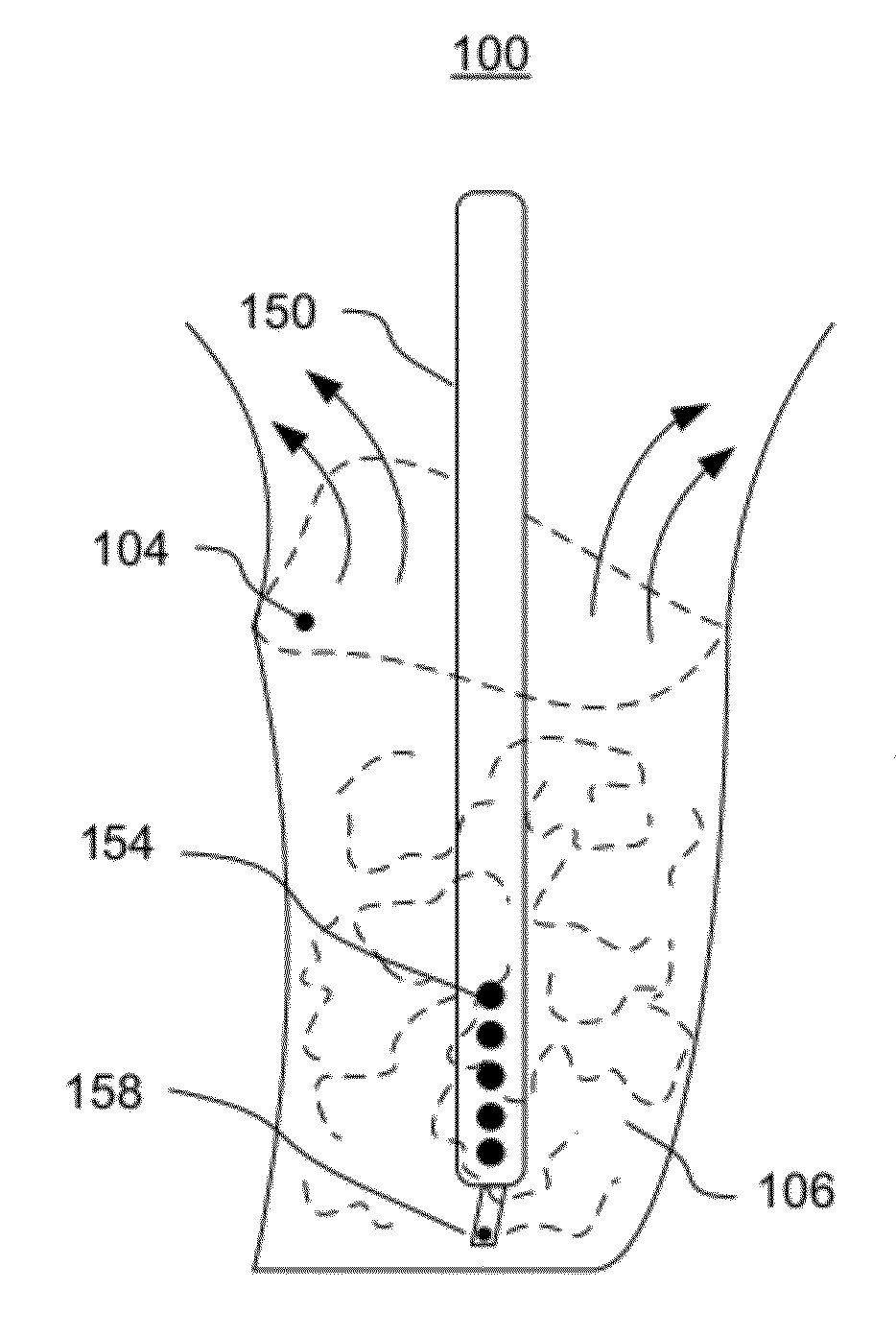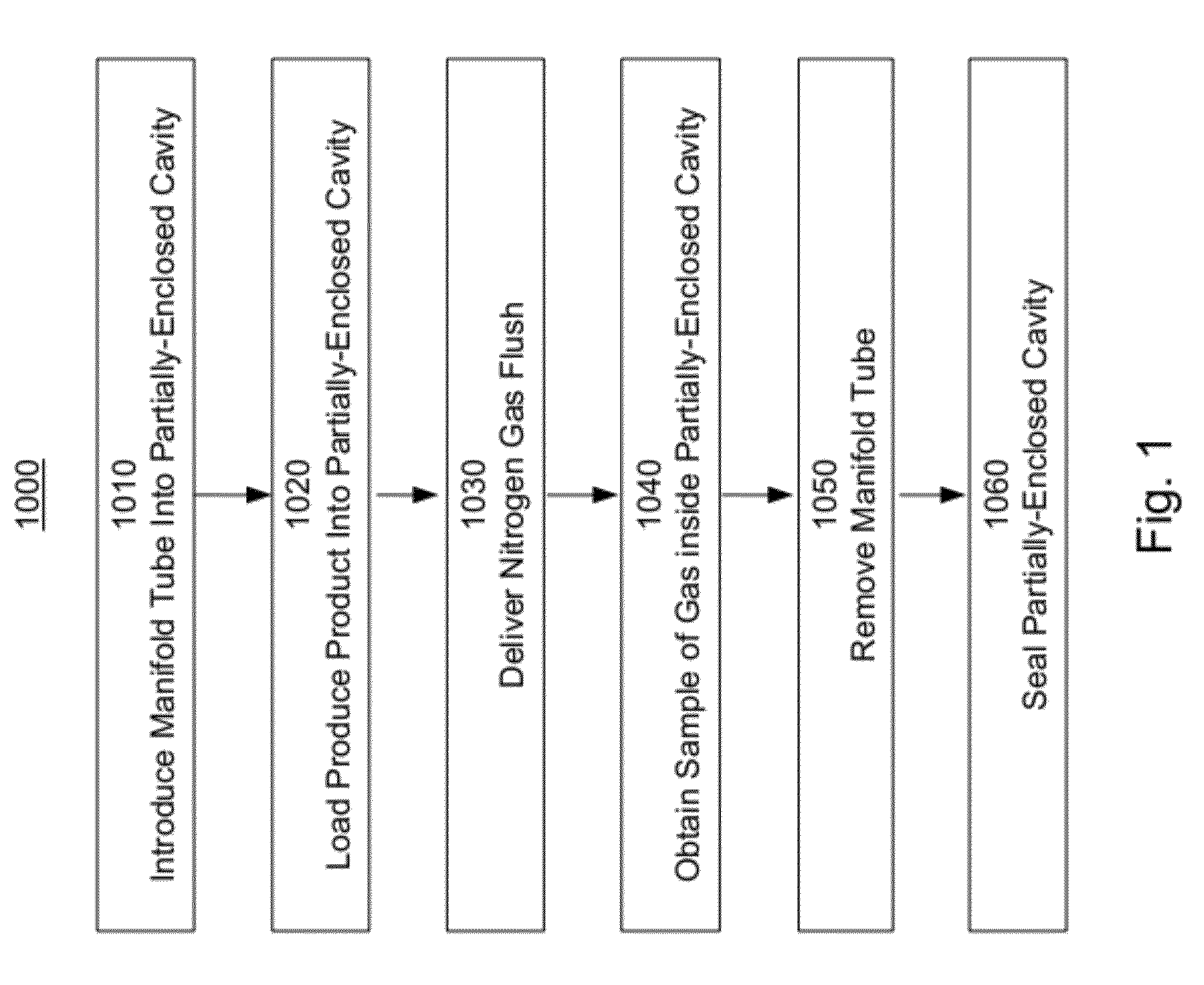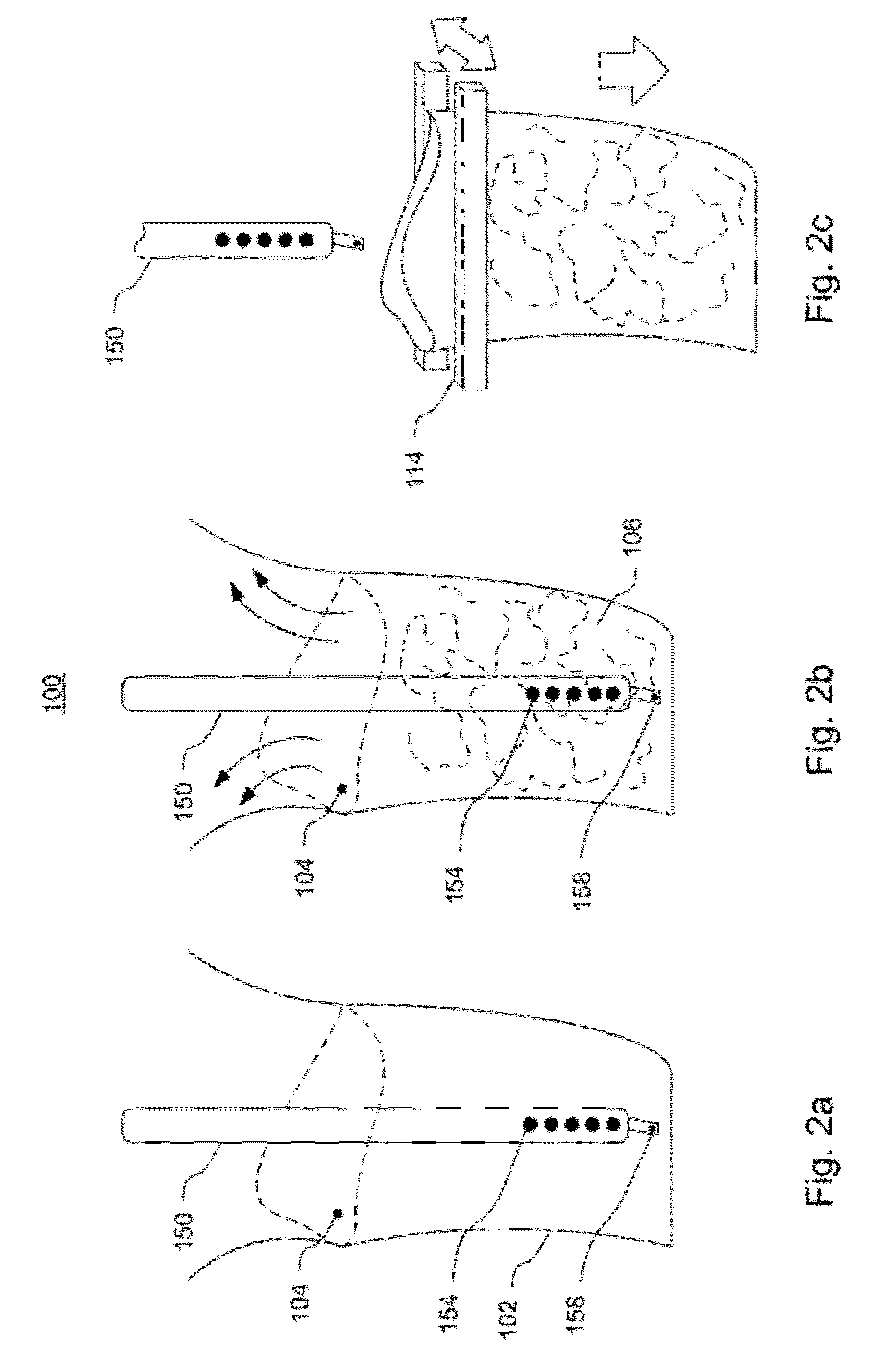High-flow, low-velocity gas flushing system for reducing and monitoring oxygen content in packaged produce containers
a gas flushing and high-flow technology, applied in the field of gas flushing systems for reducing and monitoring the oxygen content of packaged produce containers, can solve the problems of degrading the quality of lettuce leaves, and affecting the quality of fresh produce products, etc., to achieve the effect of reducing oxygen
- Summary
- Abstract
- Description
- Claims
- Application Information
AI Technical Summary
Benefits of technology
Problems solved by technology
Method used
Image
Examples
example 1
New Lance Manifold Performs as Well as or Better Than Control Devices
[0087]FIG. 10 depicts testing results comparing the lance manifold “new lance” to two control devices described above: tube-in-tube and welded lance. The tests were designed to verify that the performance of the new lance met or exceeded the performance of existing designs. As an indicia of performance, the number of occurrences where lettuce product was caught in the seal jaw were recorded. With regard to FIG. 10, the columns designated “# PIS” represents the recorded number of product-in-seal failures and “% PIS Leaker” represents the percentage of product-in-seal failures that resulted in leaking packages.
[0088]The tests were conducted at three different production facilities: Soledad, Bessemer City, and Springfield. All three production facilities were producing the same product, Classic Romaine. All three production facilities operated the manifold lance and control devices at 45 psi of nitrogen while producin...
example 2
Oxygen Analyzer of the Lance Manifold Compared to Destructive Testing
[0092]A lance manifold having an oxygen analyzer was used to package the products shown in the left-hand column of FIG. 11. The oxygen analyzer was a Bridge oxygen gas analyzer, model no. 900601. Destructive testing was performed on the same packages using traditional testing techniques. Specifically, in destructive testing, a hollow syringe needle attached to a Bridge oxygen gas analyzer was inserted into the package to draw an air sample. Because the packages had been punctured, the package and lettuce contents were discarded after testing.
[0093]FIG. 11 depicts a comparison between oxygen levels measured using the sensor port on the lance manifold and oxygen levels measured using destructive testing techniques. In general, the results demonstrate an acceptable correlation between the oxygen levels measured using the manifold lance sensor port and traditional (destructive) bag testing techniques. One exception to ...
example 3
Oxygen Analyzer of the Lance Manifold Demonstrates Acceptable Repeatability
[0097]FIG. 15 depicts measured oxygen content of a production line using a manifold lance. FIG. 15 depicts one day's worth of production oxygen data and demonstrates the degree of variability and process capability of the system. Large spikes in the oxygen content represent a stoppage or interruption in the packaging process. By aggregating the time that the system was measured at an oxygen content above a certain threshold, a percentage of system uptime (or downtime) can be estimated.
PUM
| Property | Measurement | Unit |
|---|---|---|
| flow rate | aaaaa | aaaaa |
| area | aaaaa | aaaaa |
| velocity | aaaaa | aaaaa |
Abstract
Description
Claims
Application Information
 Login to View More
Login to View More - R&D
- Intellectual Property
- Life Sciences
- Materials
- Tech Scout
- Unparalleled Data Quality
- Higher Quality Content
- 60% Fewer Hallucinations
Browse by: Latest US Patents, China's latest patents, Technical Efficacy Thesaurus, Application Domain, Technology Topic, Popular Technical Reports.
© 2025 PatSnap. All rights reserved.Legal|Privacy policy|Modern Slavery Act Transparency Statement|Sitemap|About US| Contact US: help@patsnap.com



